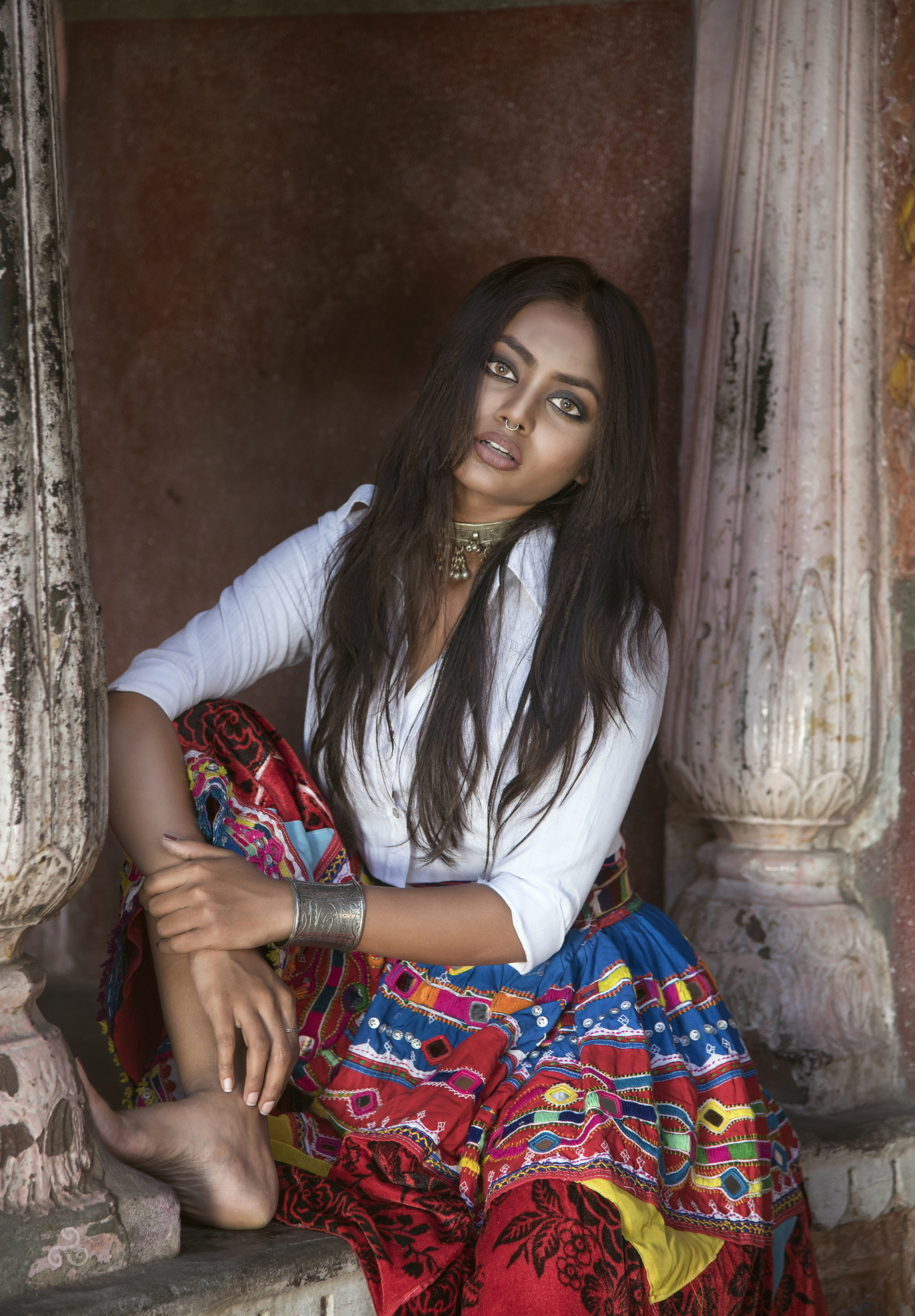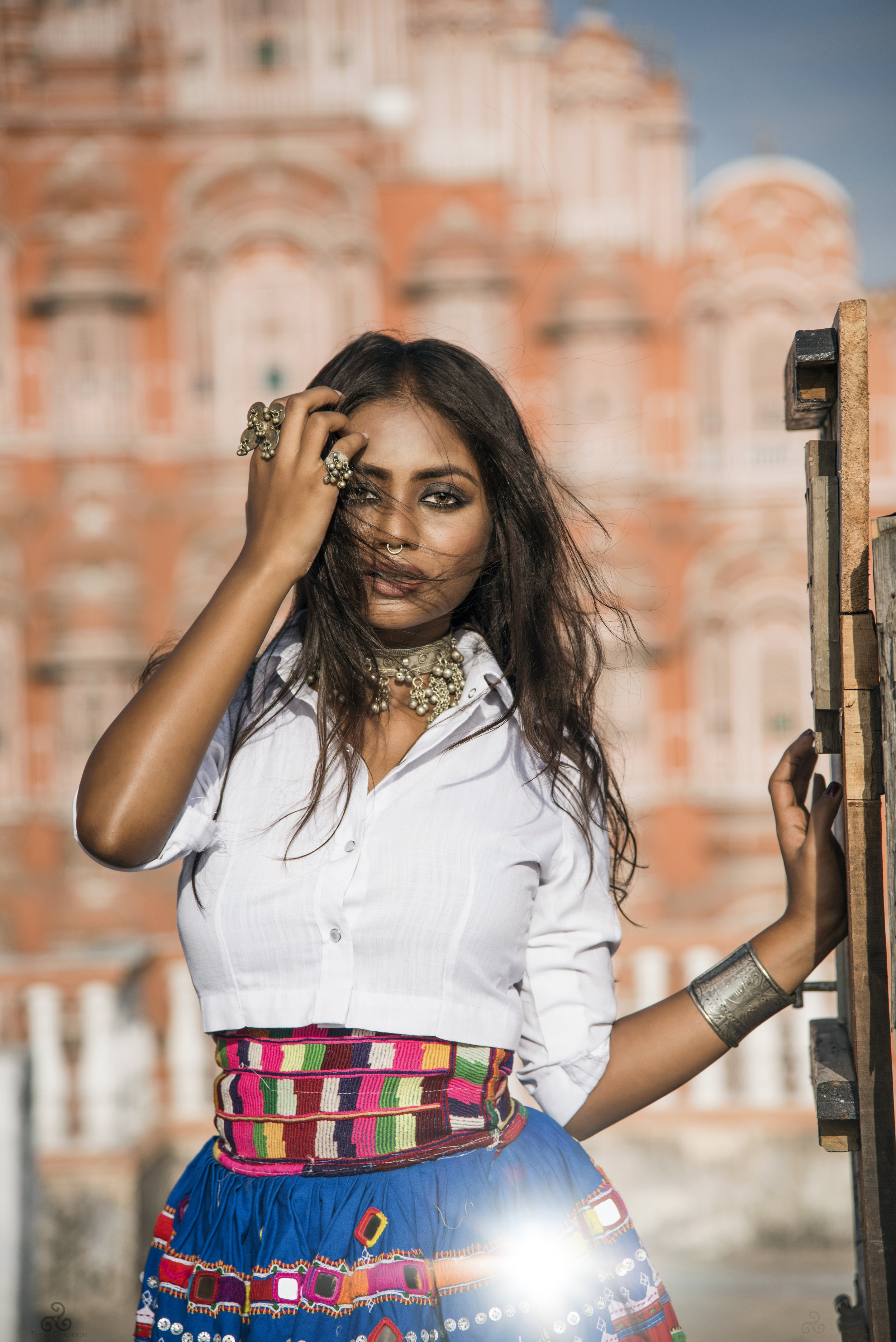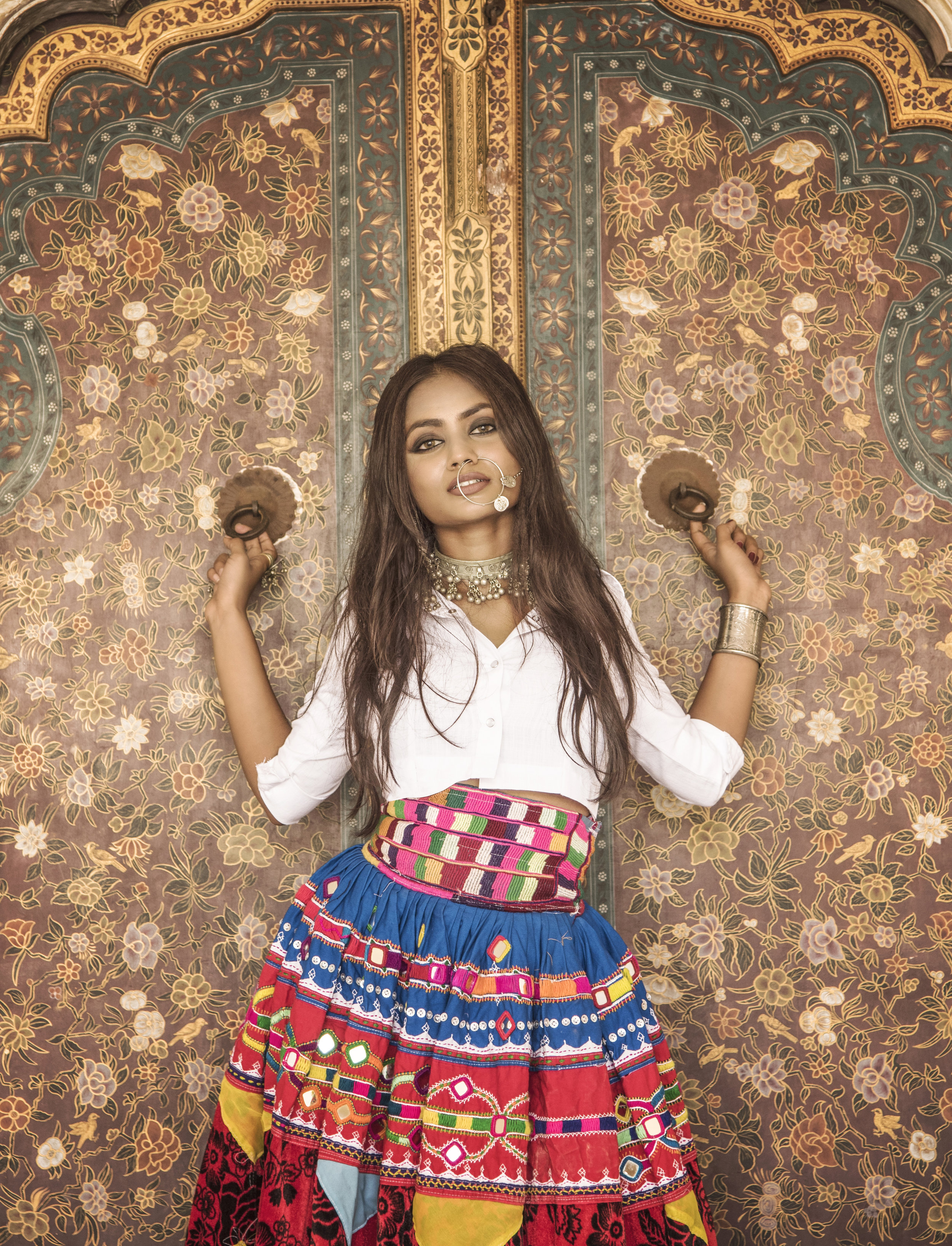By: Sky Braun, MFM Editor/Writer, Instagram: @skybfree
Aiming toward a fusion of traditional and modern, I’d say Prachi Sharma, (@thirddimension) fashion photographer reigning from India, accomplished her goal. Incorporating this overall theme into not only the styling, but also the area’s culture and way of thinking, she further explained:
The pictures come out as a tangent to the clichéd use of traditional costumes by keeping their ethnicity with a tinge of modernity. For example, as we are a part of this whole developing world where one cannot choose extremes such as ‘Am I a traditionalist or modernist?’ One generally tends to have flavors of both. Similarly, a modern woman here may not be a hardcore traditionalist or modernist but an evolution of both the forms, yet retaining her individuality. The modern fashion is reflected in her styling and the poses on one side while on the other, a traditional costume that has an amalgam of both the extremes and yet, can be worn in daily life.
The model chosen for this project, Farah Magi (@farahmagi), is a blogger from a metropolitan city called Bangalore, a totally different city from the location of the shoot, not just in terms of geography, but also tradition, culture, and development. The location, Jaipur, India, was chosen for its historical roots in context of women, as they say it was built for the royal women to take a peek of street festivals, while remaining unseen indoors. Magi stated Jaipur has always fascinated her for its richness, both historically and culturally. She also shared that during her shoot, as a woman in the city, “which is still conventional in terms of culture, one does have to go through all the glaring and staring – not just by men, but curious women as well.”
Magi’s goal was to portray Jaipur from the perspective of an outsider. Therefore, she also wanted to shoot with a photographer born and raised in Jaipur, more than familiar with its culture. She very appropriately called the project a “collaboration of two creative minds and a juxtaposition of two distinct perspectives,” as she went on to explain, “we did not want to keep it completely ethnic and traditional. We kept the styling rather fresh and modern, but the soul was the beautiful heritage city that Jaipur is. We put a lot of love and care in picking out each and every single element. The crisp white shirt signifies the men of Jaipur: rather austere and sometimes defiant of cultural change. The skirt signifies the women of Jaipur: vibrant and multi-hued. The skirt and jewelry were sourced from the original Banjara tribes of Rajasthan; they're all handmade. I personally went down to the tribal village and requested them to sell it to me. The finishing touches were a pair of heels, disheveled hair, a negligent smoky eye and an attitude of nonchalance that only an urban outsider can permeate. It was a stark contrast between the old and the new.”
An excerpt from a post on her very own blog informs that:
Jaipur – a city that a lot of people associate with women who cower to the trope of patriarchal wish fulfillment, creates interesting and layered narratives. It is the cultural miscellany with influences that are simultaneously global and local, that draws me towards this city. For me, it represents a city, which underlines the attempt made by a woman who steadily tries to enforce her agency in a corseted society. I met a lot of powerful women with a relentless heart, the real backbone behind this ‘heritage’ site. Women artisans keep the traditional crafts alive, lending the bazaars a wide array of colors that is not just limited to pink, and that is the sort [of] rainbow umbrella you want to be under. Gota Patti, Bandhani, Laheriya, Block-printing, Kinari, Tarkashi, Meenakari…and the list goes on and on. During this visit, I picked up one product with each of these traditional techniques just to keep in my bedroom and constantly keep inspiring myself. Jaipur, hence, is not just a single color. It is every single color in the spectrum. Albeit a relatively undercooked broth of female talent.
Clearly, being a photographer or model in these areas of India is not the easiest task, but it is as interesting as it is difficult, Sharma explained. Many factors play a role, ranging from access to locations, culture, gender, to language and so on. She reminds us of the positive though, by offering an alternate perspective. In a country with such diverse geography, terrain, and people, it is definitely possible to find and produce any kind of fashion shoot imaginable – if you’re as passionate and forward thinking as Prachi Sharma and Farah Magi, that is.





